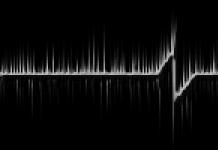I receive a lot of questions in the mail from novice photography enthusiasts, and I decided that it’s time to make a small series of articles from the “Photography for Dummies” series, which are supposed to explain various photographic terms, talk about how to choose a camera for amateur tasks, Well, there will definitely be several articles about working with the Adobe Lightroom program, because processing the photographs taken is no less important than the process of photographing itself. In this article we will talk about such an important parameter as the size of the camera matrix, and we will reveal the veil of secrecy over the mysterious term “crop factor”. Store salespeople and marketers usually like to talk about the number of megapixels a camera has, and if you listen to them, some “digital point-and-shoot camera” with 20 megapixels is much cooler than a DSLR with 16 megapixels. And this is not at all true. Because, among other things, in cameras the physical size of the matrix (sensor) is very important, and not just megapixels. In conversations about cameras of advanced amateur and professional photographers, one often hears phrases from the series: “But it has a small matrix,” “Yes, there is a fifth crop,” “What can you shoot with such a matrix?”, “Full frame is our everything.” . What kind of matrix is this? A matrix (photosensitive matrix, sensor, photosensor) is a microcircuit consisting of photodiodes, which is the most important part of a digital camera. Simply put, the matrix is an analogue of photographic film. In film cameras, the image through the lens fell onto the film and was stored on it, but in digital cameras, the image through the lens gets onto the matrix, is formed there, but is stored on a memory card or in the camera’s built-in memory. The so-called Full Frame has a size approximately equal to the size of the frame of 35 mm film, which was used to shoot in film cameras. A full matrix is expensive to produce (there is a high percentage of defects), cameras with it, as a rule, are rather large in size, heavy in weight, and in any case are expensive, as a result of which cameras with a full matrix are used mainly only by professionals. Well, or advanced amateurs with good earnings, for whom the term Full Frame is sacred. To reduce the cost, size and weight of cameras, manufacturers came up with the idea of making the matrix smaller - cutting it off. The English word crop means “to trim.” Crop factor is a number showing how many times a given matrix was cropped in relation to the full matrix (Full Frame). A crop factor of 1.5 or 1.6 (the most popular option in amateur DSLRs) means that the matrix here is reduced by 1.5 or 1.6 times compared to the full-format one. Here, for example, is a visual comparison of the matrix sizes of a Full Frame camera and the matrix of an amateur SLR (from the website Cameraimagesensor.com).  In advanced mirrorless cameras, which are now actively replacing amateur DSLRs, a matrix with a crop factor of 2 is often installed - that is, it is half the size of a full-format matrix. Here it is in comparison with the previous two.
In advanced mirrorless cameras, which are now actively replacing amateur DSLRs, a matrix with a crop factor of 2 is often installed - that is, it is half the size of a full-format matrix. Here it is in comparison with the previous two.  Cheap digital point-and-shoot cameras like the Canon Powershot A1300 have a matrix with a crop size of something like 5.62 - this is what it looks like in comparison.
Cheap digital point-and-shoot cameras like the Canon Powershot A1300 have a matrix with a crop size of something like 5.62 - this is what it looks like in comparison.  Well, modern smartphones now have matrices with a crop factor of around 7.1 - for example, this is exactly what is installed in the iPhone 5S. Here it is on the scale of comparisons.
Well, modern smartphones now have matrices with a crop factor of around 7.1 - for example, this is exactly what is installed in the iPhone 5S. Here it is on the scale of comparisons.  Now the question is: which matrix should you prefer? Do I need to immediately strive for Full Frame in order to pray for it daily? On the one hand, the larger the sensor, the better the quality of the resulting photo. Of course, many other factors come into play here, primarily the lens, but just purely physically: the larger the matrix, the better the quality. (By the way, there are so-called medium format cameras with sensors from 40 mm in width and larger, but they are only for professionals and cost like good cars.) How is this “better quality” manifested? In detail, sharpness, clarity, the quality of the resulting print: if the image needs to be used in printing, then the full matrix format is almost mandatory in order to lose as little as possible in quality with a noticeable increase during printing. In addition, the larger the original image, the easier it is to crop it: that is, cut out a piece of the frame from it and still obtain acceptable quality. Also, the larger the matrix, the better the camera shoots in poor lighting conditions: with a large matrix at high sensitivity values, the so-called “noise” appears much less (these are dots in the image - like grain in old black-and-white photographs taken on high-speed film). On the other hand, the full format, as we have already said, leads to an increase in the size of the camera, an increase in weight and always a high price. And if you are an amateur photographer, then why would you spend a lot of money and carry a heavy camera with you if you have no idea what it does for you? As a result, the camera (and sensor) needs to be selected to suit your tasks and your wallet. For beginners, an inexpensive point-and-shoot camera with a crop size of 5.7 is quite suitable. For advanced amateurs who already understand something about photography and know what opportunities certain cameras provide them with, it is better to focus either on good mirrorless cameras with a crop size of 2 - 1.5, or on amateur SLR cameras with a crop size of 1.5 - 1. 6, especially since such DSLRs are now being produced
Now the question is: which matrix should you prefer? Do I need to immediately strive for Full Frame in order to pray for it daily? On the one hand, the larger the sensor, the better the quality of the resulting photo. Of course, many other factors come into play here, primarily the lens, but just purely physically: the larger the matrix, the better the quality. (By the way, there are so-called medium format cameras with sensors from 40 mm in width and larger, but they are only for professionals and cost like good cars.) How is this “better quality” manifested? In detail, sharpness, clarity, the quality of the resulting print: if the image needs to be used in printing, then the full matrix format is almost mandatory in order to lose as little as possible in quality with a noticeable increase during printing. In addition, the larger the original image, the easier it is to crop it: that is, cut out a piece of the frame from it and still obtain acceptable quality. Also, the larger the matrix, the better the camera shoots in poor lighting conditions: with a large matrix at high sensitivity values, the so-called “noise” appears much less (these are dots in the image - like grain in old black-and-white photographs taken on high-speed film). On the other hand, the full format, as we have already said, leads to an increase in the size of the camera, an increase in weight and always a high price. And if you are an amateur photographer, then why would you spend a lot of money and carry a heavy camera with you if you have no idea what it does for you? As a result, the camera (and sensor) needs to be selected to suit your tasks and your wallet. For beginners, an inexpensive point-and-shoot camera with a crop size of 5.7 is quite suitable. For advanced amateurs who already understand something about photography and know what opportunities certain cameras provide them with, it is better to focus either on good mirrorless cameras with a crop size of 2 - 1.5, or on amateur SLR cameras with a crop size of 1.5 - 1. 6, especially since such DSLRs are now being produced
One of the most important and basic parameters of any photographic equipment is size of the photosensitive sensor of the camera. And we are not talking here, but about the actual physical area of the photosensitive element.
Previously, most photographers shot with film cameras, which used the so-called 35mm film(film standard since the distant 1930s). Those were quite a long time ago, and somewhere since 2000, digital SLR cameras (DSLRs) became very popular, the principle of operation of which remained the same as in film cameras, but instead of film, the digital SLR cameras began to use an electronic light-sensitive matrix, which forms the image .
That's just the price for making such a matrix hundreds of times more expensive than regular film. Due to the huge price of producing an analogue of 35mm film and the general complexity of manufacturing a huge matrix with millions of transistors, a number of manufacturers began to produce crop sensor cameras. Concept ‘ cropped matrix’ means that we are talking about a smaller matrix than the standard 35mm film size.
Crop factor(Crop – from English “ cut") is an indicator for cropped matrices; it measures the ratio of the diagonal of a standard 35mm film frame to the diagonal of the cropped matrix. The most popular crop factors among CZK are K=1.3, 1.5, 1.6, 2.0. For example, K=1.6 means that the diagonal of the camera matrix is 1.6 times smaller than the diagonal of a full-frame sensor or the diagonal of 35mm film.
In fact, not all central control cameras are equipped with a cropped matrix; now there are many cameras with a matrix size equal to the size of 35mm film, and K=1.0. Cameras that there is a matrix the size of a classic 35mm film, are called full frame digital SLR cameras.
Cropped cameras are usually APS-C cameras with K=1.5-1.6, or APS-H cameras with K=1.3. Full frame cameras are usually called Full Frame. For example, cropped APS-C Nikon cameras are called Nikon DX, and full-frame cameras are called Nikon FX.
DX (cropped camera, APS-C type, K=1.5) 23.6 by 15.8 mm 372.88 sq.mm.
FX (full frame camera, K=1.0) has a matrix with dimensions of approximately 36 by 23.9 mm, the area of such a matrix will be equal to 860.4 sq.mm
Now we divide the areas of the matrices and we get that the DX matrix is smaller than the full-frame matrix in 2.25 times. To quickly calculate the real difference in the physical dimensions of a full-frame and cropped camera, just square the crop factor. So, DX cameras use a crop factor K=1.5, we find that the areas of DX and FX cameras differ by 1.5*1.5=2.25 times.
If we install a standard (for example) lens with a focal length of 50mm on a cropped camera and look through the viewfinder, we will see that the viewing angle has become narrower than with the same lens on a full-frame camera. Don't worry, there's nothing wrong with the lens, just because the sensor of a cropped camera is smaller, it only “cuts out” the central area of the frame, as shown in the example below.

The difference between a cropped and full frame camera. The first photo was taken with a full frame camera and a 50mm lens, the second photo was taken with a cropped camera and the same lens. The viewing angle on the cropped camera has become smaller.
At the same time, many people have the opinion that the focal length of the lens changes - but this is just an illusion. In fact, the viewing angle that a person observes in the viewfinder changes, the focal length of the lens does not change. Focal length is a physical length of a lens and will remain the same on any camera. But because of this illusion, it is convenient to say that the visible image on a cropped camera is similar to a 75mm lens (50mm*1.5=75mm) when used on a full-frame sensor. That is, if you take two tripods and two cameras - one full-frame, the other cropped, and attach a lens with a focal length of 75mm to the full-frame one, and a lens with a focal length of 50mm to the cropped one - then in the end we will see an identical picture, since they have viewing angles will be the same.
The recalculated focal length is called Equivalent Focal Length, abbreviated as EFR. EGF is recalculated even for cropped lenses such as Nikon DX and Canon EF-S.

Shot with a full-frame camera in full-frame mode
And an example of the same photo, taken from the same distance, without changing the settings, but only in cropped mode:

Shot with a full-frame camera in DX mode. The difference in viewing angle is visible. DX mode, or DX camera, seems to cut out only the central area from the original image provided by the lens.
In fact, when using lenses from Full Frame cameras on cropped cameras, we get some significant advantages:
- Decreased viewing angle, turning a standard lens into a telephoto lens, and from a telephoto lens into a super telephoto lens. So using a 300mm telephoto camera we get the same viewing angle as a 450mm lens on 35mm film. This is a pretty great opportunity to buy a cheap zoom telephoto camera for not a lot of money and due to the crop factor, obtain a large EGF.
- Due to the fact that full-frame lenses only work in the central area on cropped cameras, you can get rid of such picture defects such as vignetting, a drop in resolution at the edges of the frame, and parts of the distortion. Typically, the central area of the frame has the highest image quality.
Also, using lenses from cropped matrices, we get cheaper lenses. Although this has its downsides. Lenses from cropped cameras need to cover a smaller area of the photosensitive element, which means you can use less expensive glass, have less weight, etc. At the same time, when buying lenses for cropped matrices and when subsequently switching to full frame, you will have to additionally buy new lenses for full frame. I advise you to read the related article -
Many beginning amateur photographers come across such concepts as “cropped camera”, “cropped matrix”, “crop factor”, “lens for crop” and similar concepts based on the word crop. Now we will clearly explain what crop is.
The word “crop” itself is inherited from the English word crop - to trim. So, what are we going to cut here? If we are talking about a cropped camera, this means that the digital matrix installed in the camera has a physical size smaller than its predecessor - film. The standard full frame is taken on 35mm film. Its frame is 36x24mm. If a camera has a matrix size smaller than the size of standard 35mm film, it is called “cropped”. How is this reflected in the photograph? Let's look at an example. The image projected by the lens onto the matrix has a round shape.
If we assume that this image was obtained from a full-frame camera and a full-frame lens, then we get the following picture.

Everything that is included in the frame will be our photograph. In the case of cropped digital cameras, in the picture we will get only that part of the image that we got on a smaller matrix. In the figure, the red rectangle imitates a reduced (cropped) matrix.

We clearly see that due to the smaller physical size of the matrix, the resulting image will not have a part of the frame that would be included in the frame in full frame. The viewing angle of the lens becomes narrower, which is where the concept of “crop factor” comes from. A full-frame 50mm lens gives a picture on a cropped sensor that we would get using about a 75mm lens on a full frame.
As for lenses for full-frame cameras and cropped ones. Since the advent of cameras with a small matrix size, it has become rational for manufacturers to use lenses that do not cover a standard frame. Lenses that are not capable of covering a 36x24mm frame are called cropped lenses or lenses for crop cameras. This is roughly what our picture looks like on a cropped lens.

Using cropped lenses on full-frame cameras will lead to rounding of the resulting image, to “hard” vignetting, so to speak.

Whereas using a cropped camera together with a cropped lens will give normal coverage of the entire frame.

The expression “this is a crop from a photograph” is also not uncommon. This expression means that this is a cropped part from the original photograph.
Nikon camera with DX series lens
This is the numerical proportion between the frame diagonal of 35 mm film (24 x 36 mm) and the sensor of a digital camera, which is usually smaller or almost the same size. Used to calculate the equivalent focal length of interchangeable lenses.
When using 35mm optics on film cameras, a lens with a focal length of 50mm is considered standard, and a wide-angle lens no longer than 35mm. For portraits, a 75–120 mm lens is used, and longer-range optics are used for special tasks (for example, shooting sports). If the matrix is smaller than the frame of a 35mm film, then a part, a crop, is cut out from the center of the image formed by the lens. A portrait lens turns into a telephoto lens, a standard lens into a portrait lens, etc.
It is customary for manufacturers to specify the focal length for a frame at 24 x 36 mm, even if the lens can only be used with digital cameras (modern Olympus optics, AF-S series from Canon, DX from Nikon). Digital lenses have a smaller coverage field than conventional ones. They cannot be used with film and full-frame digital SLR cameras, but they have their advantages - compactness and high aperture at a lower price. True, not all three qualities at once, but only two to choose from. The disadvantage of such optics is vignetting (a drop in brightness closer to the edges of the frame), which is inherent to one degree or another in any EF-S or DX lens. The company Olympus, which has not produced “film” lenses for many years, has learned how to combat this effect.
Classification of mirror DFCs
SLR digital cameras are produced by Canon, Fuji, Nikon, Olympus, Pentax, Sigma, Sony... Cameras from these manufacturers, in turn, are divided into professional and amateur. But what is at the root of all the differences? What is the main difference between one and the other? It is safe to say that it is the matrix format - the crop factor - that is fundamental. The general trend is that the larger the matrix, the more “professional” and more expensive the camera itself. Although there are exceptions to this rule (for example, Sigma SD14). Currently, we can talk about five classes of digital SLR cameras:
To the listed categories it is necessary to add a motley family of cameras whose matrices are larger than Full Frame - medium format cameras with interchangeable backs. Along with a digital back, you can use a film back, so there is a crop factor here too - it is calculated from the size of the film frame. 56 x 56 mm - for Hasselblad 500 series, Rolleiflex 6000 series. 41.5 x 56 mm - for Contax, Mamiya 645 AFD systems.
The exceptions are natively digital medium format cameras that are not compatible with film: the most affordable model in this class is the Mamiya ZD, the Hasselblad H3D, and the not-in-production Pentax 645 Digital.


A medium format digital camera is the average photographer's dream. This is an expensive pleasure, because the cheapest costs $10 thousand. Due to the especially large pixel and optics with a beautiful pattern, which, given the format, is no longer required to provide a given number of “lines per 1 mm”, these cameras create an amazing picture. True, the “dream camera” has a disadvantage due to its large matrix. It gets very hot, so it is noisy even at medium ISO and requires an active cooling system with a fan (hence the bulky size of the kit).
Good or evil?
A typical problem with cropped cameras is noise. It will be noticeable if you compare the image produced at high ISO by the 12-megapixel Canon 5D and, for example, the Sony A700, which has the same resolution but a smaller matrix size. The larger the sensor, the lower the noise and the wider the dynamic range (the range of brightness between the lightest and darkest points of the image).
The downside of full frame cameras is vignetting and a drop in sharpness at the edges of the frame. It is due to the peculiarities of optics and photosensitive cells. The matrices “correctly” capture only frontal light, and closer to the periphery of the frame it falls at an angle, which leads to a noticeable drop in detail and brightness in these areas. Film cameras are free from this drawback, because for the photosensitive surface of the film it is completely unimportant at what angle the light falls on it.
The smaller the matrix, the greater the depth of field. When shooting a portrait with a Canon 5D at f/2.8, for example, only part of the subject's face may be sharp. And if you have a Fuji S9600 pseudo-DSLR in your hands, then with the same aperture the entire model will be sharp. For macro and landscapes, the image should be sharp - DSLR Olympuses and high-quality compacts like the mentioned Fuji S9600 are good here. When shooting portraits, on the contrary, you need a beautifully blurred background and a plastic picture that conveys the nuances of tonality. The best option here would be a medium format studio camera with a digital back.

Paths of Progress
The quality of the image obtained with a digital camera depends not only on the area of the frame, but also on the structure of the elements responsible for forming the image, and on losses at the stage of converting the “raw” analog signal into a digital image (the bit depth of the analog-to-digital converter, the Bayer algorithm interpolation). The detail/noise ratio is also directly affected by the intensity of the low-pass filter located in front of the matrix. Even with identical matrices, cameras from some manufacturers are superior to others in terms of picture quality. Due to the larger size of the microlenses, which are placed in front of each pixel and are responsible for forming the light beam, the new Canon 40D DSLR managed to achieve a lower noise level than the amateur 400D, equipped with what would seem to be the same 10-megapixel matrix.
The most interesting thing is that even with the same matrix size and resolution, the useful area of each pixel can vary. HR matrices (in compact cameras) differ in the shape of the pixels - in the form of a hexagon. The pixels form a structure similar to a honeycomb. A sample from the natural world suggested to engineers how to use die area more efficiently. The result: compact Fuji cameras like the F31fd or S9600, despite their tiny sensors, are close to DSLRs in image quality.
Exactly the same structure takes place in the “professional” Super CCD SR matrices, which are equipped with Fuji SLR models (including the new S5 PRO). It is complemented by another useful discovery by engineers: under each microlens there is a hexagonal S-pixel that generates color information, and an additional smaller R-pixel that reacts to strong light. Strictly speaking, the R-pixel does not increase detail: there is one microlens for a couple of different pixels. It acts as a subbuffer, allowing you to obtain images with better “volume”. The difference in brightness (dynamic range) in each area can reach a significantly greater value than in the case of a conventional matrix. And this allows you to calmly shoot with direct flash, without fear of overexposure and at the same time getting a well-developed image in the shadows. For Fuji devotees, this feature is much more valuable than the abstract resolution measured by tests.

An alternative option is offered by Sigma, which uses three-layer Foveon X3 matrices. In a conventional matrix, invented by Kodak engineer Baer in the late 70s, color is achieved through a group of four pixels - red, blue and two green (green contains more information about brightness). Everything would be fine, but at high magnification we see a cloudy picture - this is due to the very principle of obtaining an image. The problem can be partially remedied by complex processing in Photoshop (or your camera's processor). The basis of the “revolutionary” Foveon matrix is the property of silicon to transmit rays of different colors to different depths. A pixel in the final image requires three matrix cells at once, located sequentially one after another, on different layers. Each layer provides a resolution of 2652 x 1768 pixels (4.7 MP). The output is an image where each pixel has a strictly accurate color, which gives excellent sharpness when printing small formats (up to A4). The disadvantage of this approach is that the resolution is low by modern standards. The new SD14 DSLR has a total resolution of 14 megapixels, but the effective final image resolution does not even reach 5 megapixels. Olympus has managed to eliminate the main disadvantage of its previous models - poor quality at high ISOs. The gap between the new Olympus and Panasonic DSLRs and most competitors does not exceed one ISO step (with noise reduction disabled). Due to the best image stabilizer in history in the professional model E-3 (up to five steps), you can simply ignore this drawback!
Digital SLRs with a full-format matrix are becoming more affordable, but this does not mean that the method of improving the image by increasing the area of the matrix is the only way to ideal image quality. There are many options to achieve the quality we strive for without going beyond the “crop”, focusing on the internal characteristics of the pixel, making more intelligent use of the available area.
And in the second part we got acquainted with the device and the main characteristics of the lenses. We talked about the fact that the viewing angle and focal length of the lens are the main characteristics in previous lessons. We already know that these characteristics are interrelated:
The shorter the focal length of the lens, the wider its viewing angle.
The longer the focal length of the lens, the narrower its viewing angle.
When a person uses his own camera, over time he gets used to the fact that at certain focal lengths, his lens gives one or another viewing angle: it “brings closer” the subject being photographed stronger or weaker. Will these relationships between focal length and viewing angle remain the same or change if you change the camera? Today we will find out. Often, when discussing photographs, photographers say: “this picture was taken at such and such a focal length,” thereby characterizing the viewing angle at which the image was taken. Even under photographic examples in our articles, the focal length of the lens with which these images were taken is often indicated. How do you know what focal length on your camera corresponds to the same viewing angle? How can you take the same photo with your camera?
We have to figure out how the viewing angle of the lens will depend on the model of your camera, get acquainted with the concepts of “crop factor” and “equivalent focal length”.
Excursion into history
Previously, in the film era, 35 mm film was widely used - ordinary photographic film, familiar to every person. It was used everywhere, from the simplest compact cameras (perhaps everyone had a film “soap box”) to serious professional equipment. Since all devices had the same area of the photosensitive element (film frame), lenses with the same focal length on all devices gave the same viewing angle. For example, on any camera that works with 35 mm film, a lens with a focal length of 50 mm had a viewing angle of 45°. Let us remind you that modern full-frame digital cameras also use a sensor the size of a film frame - 24x36 mm.
Lens viewing angle and sensor size
Today the situation has changed. Matrixes in digital cameras come in different sizes.

Therefore, with the same focal lengths of the lens on different cameras, the viewing angle will also depend on the size of the camera matrix. Let's look at the diagram:

It turns out that if on a full-frame matrix (or on a film frame) a lens with a focal length of 50 mm provides a viewing angle of 45°, then on an APS-C format matrix it is already 35°. On a Nikon 1 system camera with an even more compact 1” format sensor, the same lens will provide a viewing angle of only 15°. The smaller the matrix in the camera, the stronger the lens with the same focal length will “zoom in”. The same lens, when installed on different cameras, will produce a completely different picture. This must be taken into account when choosing optics.
Crop factor and equivalent focal length
Since today different cameras have matrices of completely different sizes, it is easy to get confused about what viewing angle a lens with a particular focal length will give on a particular camera.
Old-school photographers, accustomed to working with film photographic equipment and classic focal lengths, clearly associate them with specific viewing angles. To understand what focal length corresponds to a particular lens viewing angle on modern devices, two concepts were introduced: crop factor and equivalent focal length.
Equivalent focal length (EFL)
This characteristic is not needed by beginners, those who bought their first camera - the numbers of the equivalent focal length will not tell them anything. But experienced photographers who are accustomed to film photographic equipment will find this characteristic useful. It will also be useful to those who are thinking about buying a new camera with a matrix of a different size and want to choose the optics that are suitable for it, and find out how their old lenses will work on the new camera.
Equivalent focal length allows you to find out what focal length a lens with the same viewing angle would have on a full-frame (or film) camera. This characteristic allows you to compare lenses of all types of cameras, including compact ones. In the characteristics of a lens not designed for a full-frame camera, you can often find the item “equivalent focal length” or “35mm equivalent focal length.” This point is needed so that the photographer can figure out what viewing angle this lens will give. For example, for a lens with a focal length of 50 mm mounted on a camera with an APS-C matrix, the equivalent focal length will be 75 mm. The tiny 4.3mm focal length used in the compact camera lens has the same field of view as a 24mm lens at full frame.
How to calculate the equivalent focal length yourself? To do this you need to know the crop factor. This is a conditional multiplier that reflects the change in viewing angle of the lens when used with smaller matrices. This multiplier is derived by comparing the diagonals of the matrices of digital cameras with a 24x36 mm film frame. The word “crop factor” comes from the English words crop - “cut” and factor - “multiplier”.
For example, the diagonal of an APS-C format matrix is approximately 1.5 times smaller than a full-frame one. So the crop factor for an APS-C matrix will be 1.5. But the diagonal of the Nikon CX format matrix is 2.7 times smaller than the full-frame one. Therefore, its crop factor will be 2.7. Now, knowing the crop factor, we can calculate the equivalent focal length for the lens. To do this, you need to multiply the actual focal length of the lens by the crop factor. Let's say we need to know the equivalent focal length for a 35mm lens if it is mounted on a camera with an APS-C sensor. 35x1.5=50mm. So, the equivalent focal length of such a lens will be 50 mm. That is, on an amateur DSLR, a 35 mm lens will behave in the same way as a classic “fifty-kopeck” lens at full frame.

In further lessons we will study what lenses are used when shooting various scenes, we will indicate their focal lengths for both cameras with an APS-C matrix and for full-frame cameras.
Dimensions of matrices and crop factor of Nikon photographic equipment
Modern Nikon system SLR and mirrorless cameras use only three standards of matrices of different sizes. They are easy to understand.
Full frame sensors(Nikon FX). They have a physical size of 36x24 mm, that is, they are equal in size to a frame from 35 mm film. Most modern lenses are designed for such cameras. And on them they can reveal their full potential. Among modern Nikon devices, the following are equipped with full-frame matrices: Nikon D610, Nikon D750, Nikon D800/D800E, Nikon D810, Nikon D4/D4s, Nikon Df. Since the matrix of such cameras is equal in size to a film frame, the concept of crop factor and EGF is not needed for such devices.

APS-C format matrices(Nikon DX). They have a physical size of 25.1x16.7 mm and a crop factor of 1.5. Such a matrix is slightly smaller than a full-frame one, but much cheaper. Such matrices are sometimes called “cropped” (cropped). This matrix size is used by almost all digital SLR camera manufacturers. Among modern Nikon devices, Nikon D3300, Nikon D5300, Nikon D5500, Nikon D7100 cameras have APS-C matrices. You can still use full-frame optics with them, however, all lenses will “zoom in” much more strongly, which is not always convenient, because some lenses are designed for a very specific type of shooting and their loss of the required viewing angle does not allow them to be used for their intended purpose. First of all, this applies to wide-angle, portrait and reportage optics. Full-frame wide-angle optics lose their main advantage - a large viewing angle; Full-frame portrait lenses on crop begin to zoom in too much, and it becomes difficult to shoot with them; you have to move very far away. For example, if you install a classic portrait lens with a focal length of 85 mm on a cropped camera, you will have to move 5-7 meters away from the person being photographed in order to shoot at least a waist-length portrait. Full-frame reportage optics (primarily zoom lenses with a focal length of 24-70 mm) have awkward viewing angles on the crop, which are not very suitable in practice for fast, dynamic reportage shooting.
To create lenses suitable for these tasks, specially designed lenses are produced for crop. In the Nikon system, such lenses are marked with the letters “DX” in the name. Since such lenses are designed for use on a smaller sensor, they themselves become more compact and cheaper than their full-frame counterparts.

For the same reason, they will not be able to work correctly on full-frame cameras. What happens if you install a “cropped” lens on a full-frame camera? Unlike Canon cameras, Nikon has this feature. In this case, you will get very strong darkening at the edges of the frame. By the way, modern full-frame Nikon cameras can recognize “cropped” optics if they are installed, and they automatically crop the frame to the size of the APS-C matrix. This setting can be turned on or off in the camera menu.
The photo was taken on an APS-C camera with the same lens and from the same distance. As you can see, the lens on the crop gave a narrower viewing angle.
NIKON D5300 / 85.0 mm f/1.4 SETTINGS: ISO 100, F1.4, 1/1600 sThe photographs were taken with the same lens at the same distance. As you can see, the version taken with a “cropped” camera has a narrower viewing angle and fewer details are included in the frame.
Nikon CX- matrix format for mirrorless cameras of the Nikon 1 family. Physical size - 13.2x8.8 mm. They have a crop factor of 2.7. Such a small matrix ensures compactness of the entire system. Its own optics are being developed for it: it is compact and practical. Through a special adapter (Nikon FT-1), lenses for full-frame and APS-C cameras can be used on Nikon 1 cameras.

Other manufacturers have matrices of other sizes, and therefore with a different crop factor. For example, the micro 4/3 matrix standard is widely known, used by several manufacturers. This standard has a crop factor of 2. These are not very large matrices, with all the ensuing pros and cons. Cameras equipped with such matrices are compact, as are the optics developed for them. However, it is very difficult for devices with such a sensor to compete with full-frame devices in image quality - the matrix area differs by four times.
Results
If you are going to buy a new camera or are choosing new optics for an old one and want to make an approximate calculation of the viewing angle of the lens, find out the crop factor of the matrix installed in it. Based on this, choose your technique. If your camera has a crop factor of 1.5, know that you will need shorter throw lenses than full frame cameras. In the next lesson we will talk about what focal length lenses are suitable for certain types of shooting, what lens is suitable for


























